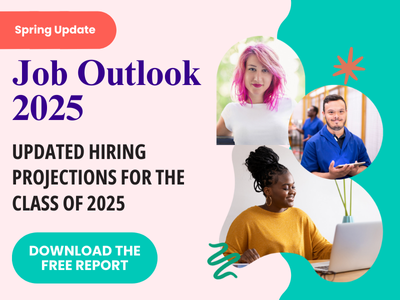NACE Journal, August 2020
“How can we attract Black talent?” Employers have been revisiting this question with increased urgency recently. The answer is not complicated: To attract Black talent, a company need only be a place that Black employees want to work and want to stay. This speaks to the need for employers to address both recruitment and retention strategies. In doing so, employers will need to uncover innovative ways to drive positive change, both as individual contributors and as leaders, in their companies that will attract and retain Black talent.
The year 2020 will be remembered for many things—among them will be the COVID-19 pandemic, the ongoing pandemic that is the murders of Black Americans, and the resulting moral shift to care more for Black lives—#BlackLivesMatter. Recent events have pricked the country’s conscience. As a result, individuals are looking for ways to align themselves on the right side of history. George Floyd, Breonna Taylor, Ahmaud Arbery, Rayshard Brooks, and Elijah McClain are a few additions to an embarrassingly long list of high-profile killings of Black Americans. Their stories have caused a resurgence of the Black Lives Matter movement, one that has been widely adopted globally by people of Black and non-Black ethnicities who have come together to show their unity on the subject.1 This has signaled a moral shift in the world, particularly in America, which has caused a cultural shift that spills into the workforce.
Employers Affirm Cultural Shift
Employers are affirming that cultural shift. Many American industry leaders, including Disney, Ben & Jerry’s, and others, have released statements permanently etching their opposition of racism and oppression for the world to see.2, 3
Procter & Gamble recently aired a commercial titled “The Talk,” part of the company’s “My Black Is Beautiful” campaign, bringing the once private conversations held in Black homes between parents and children regarding safety, violence, and bias into a public light. Although the commercial was first launched in 2017, the message is still relevant. In fact, the raised moral awareness of the country has allowed millions of people to digest the message who may not have otherwise.
Nickelodeon kept the conversation going with an 8:46 commercial blinking the words “I can’t breathe” while the sound of someone breathing played in the background.4 The commercial was powerful because it was parallel to the circumstances around the death of George Floyd. Floyd uttered the words “I can’t breathe” in the last moments of his life while he was constrained by former Minneapolis Police Officer Derek Chauvin for 8 minutes and 46 seconds. The fact that Eric Garner uttered the same words a few years earlier, before dying while constrained by former New York Police Officer Daniel Pantaleo in eerily identical circumstances, deepened the commercial’s message.5 The commercial ended with a charge to “join @colorofchange and countless others to call on public officials across the county to take real action.”
As individuals stand in solidarity with people from varying backgrounds to protest and urge lawmakers for police reform, employers (including those noted above and others) have simultaneously denounced racism on a public stage. These events have caused career development professionals to find themselves in a unique space of influence and responsibility between students and employers.
When serving individuals—students and alumni—career development professionals are able to share which employers in their network have enacted policies meant to attract and retain Black talent, are progressive in the areas of social responsibility, and are dedicated to the moral betterment of society. Carrying the expectation of assisting students with opportunities in which they can thrive requires career development professionals to consider partner employers’ cultural landscape. Psychological safety is the breath of innovation, the key to unlocking potential, and the measure of a company’s cultural landscape. When Black talent is in working environments that provide psychological safety, all stakeholders win.
“Hygiene factors” identified by Frederick Helzberg, such as pay and title, contribute to one’s decision to accept a job. Yet, one may also consider the cultural landscape just as important in the deliberation process. In today’s environment, people are intentional about working for employers that share their values; this intentionality around values also helps the job seeker to assess a prospective employer’s cultural landscape. According to a study conducted by Barna in partnership with Impact 360 Institute, Generation Z’s position on morality is: “The right beliefs are the ones that don’t hurt anyone.”6 How employers respond, or fail to respond, to the expectation of action regarding dignity and humanity for the Black community signals their company values, philosophical stance in the conversation, and the cultural landscape a new employee would navigate.
These elements will impact not only company talent pipelines, but also consumer purchasing activity. Evidence of this can be found in the boycotts of companies for their perceived anti-Black company culture. For example, in 2018, both Starbucks and Papa John’s experienced a decline in popularity and sales as a result of their perceived anti-Black company cultural climate. According to BNN Bloomberg, Starbucks lost $16 million in sales due to a single racist incident involving Black patrons, and the Courier Journal reported Papa John’s lost $96 million in market value after its founder and former CEO used a racial slur especially offensive to Black people.7, 8 Both brands responded by evolving their cultural landscape to one with elevated diversity, equity, and inclusion (DEI) company values. Then, they developed strategies to demonstrate their support of DEI efforts. Consumers recognized the changes and demonstrated their approval by re-engaging with both brands; Starbucks and Papa John’s enjoyed improved financial health along with sales from new consumers intent on supporting the companies because of their cultural climate shifts. Career development professionals need to recall these lessons to effectively carry out their role in the Black talent recruitment process.
Inclusive Company Culture: 16 Concepts
When contacted by employers to recruit top talent for internship and employment vacancies, career development professionals should take the opportunity to help their contacts see the lens through which the talent pool is judging prospects. This may require obtaining permission to step into a consultant role for employers, providing eye-opening feedback in some cases and reaffirming validation in others, and challenging employers to take an introspective inventory of strategies they have adopted to create a company culture that:
- Is “Color Brave” and aims targeted strategies toward the recruitment and retention of Black employees at all levels. (Suggestion: See Mellody Hobson’s TedTalk “Color Blind or Color Brave.”)
- Makes Black employees feel valued and encouraged to be innovative.
- Empowers Black employees to share their experiences and solutions for inequalities without fear of retaliation.
- Compensates Black employees equitably (same work, same pay).
- Provides Black employees with reasonable pathways to promotion.
- Encourages and supports professional development for Black employees.
- Connects Black employees with mentors within the company.
- Connects Black employees with sponsors within the company.
- Has Black men and women in leadership roles.
- Has Black men and women on the company’s board of directors/trustees.
- Ties metrics to its strategic diversity plan that names Black men and women.
- Provides appropriate accommodations for employees who do not feel safe in response to the COVID-19 pandemic. (According to the CDC, Black men and women are high risk and die at alarmingly higher rates than their peer identity groups.)
- Creates an intentional supplier diversity program that allocates a significant percentage of the company’s budget dollars to Black-owned business contracts.
- Markets to Black consumers in culturally nuanced ways.
- Contributes financially and otherwise to causes that benefit Black organizations and/or scholarship funds specifically for Black students.
- Builds and supports Black employee affinity groups.
Being a conduit connecting employers with talent places a degree of responsibility on career development professionals. Properly serving organizations that wish to become a place that attracts Black talent requires candor around these 16 concepts that will shift a company’s culture to one in which Black employees want to work and want to stay. An employer’s action, or inaction, from 2020 forward to include strategy in these areas will shape its future. Its decisions will determine its financial health trajectory in relation to turnover and market share directly correlated with the values of the evolving moral position of not only the nation, but also the world to care more for Black lives.
When asked for help with recruiting Black talent, career development professionals should, at minimum, inquire about the company’s Black talent retention strategies. When the opportunity presents itself, sharing the list of 16 concepts is even better because the measure of a company’s cultural landscape is the psychological safety its employees feel. A healthy psychological safe space can be created through dedicated strategies aimed at addressing any combination of these 16 concepts.
Endnotes
1 Kirby, J. (2020, June 12). “Black Lives Matter” Has Become a Global Rallying Cry Against Racism and Police Brutality. Retrieved from www.vox.com/2020/6/12/21285244/black-lives-matter-global-protests-george-floyd-uk-belgium
2 Disney: Speaking Up Because Black Lives Matter, Disney Channel. Retrieved from https://www.youtube.com/watch?v=hbbIc29bmRc&feature=youtu.be
3 Ben & Jerry’s: We Must Dismantle White Supremacy. Retrieved from www.benjerry.com/about-us/media-center/dismantle-white-supremacy
4 Scribner, H. (2020, June 2). Nickelodeon Goes Off the Air and Plays ‘I Can’t Breathe’ Video for 8 Minutes, 46 Seconds. Retrieved from www.deseret.com/entertainment/2020/6/2/21278257/nickelodeon-video-scandal-i-cant-breathe-video-commercial-ad
5 Temin, P. (2020, May 30). From Eric Garner to George Floyd: How History Repeats Itself. Retrieved from www.ineteconomics.org/perspectives/blog/george-floyd-and-eric-garner
6 Gen Z and Morality: What Teens Believe (So Far). Retrieved from www.barna.com/research/gen-z-morality/
7 Novoy-Williams, E. (2018, May 30). Starbucks Lost US$16M in Sales Due to Racist Incident. Retrieved from www.bnnbloomberg.ca/racist-incident-brought-starbucks-16-million-in-negative-press-1.1085051
8 Aulbach, L. (2019, March 5). A Timeline of the Papa John's Scandal, From the Slur to the Settlement. Retrieved from www.courier-journal.com/story/money/companies/2019/03/05/papa-johns-scandal-timeline-john-schnatter-slur-controversy-fallout/3065032002/






